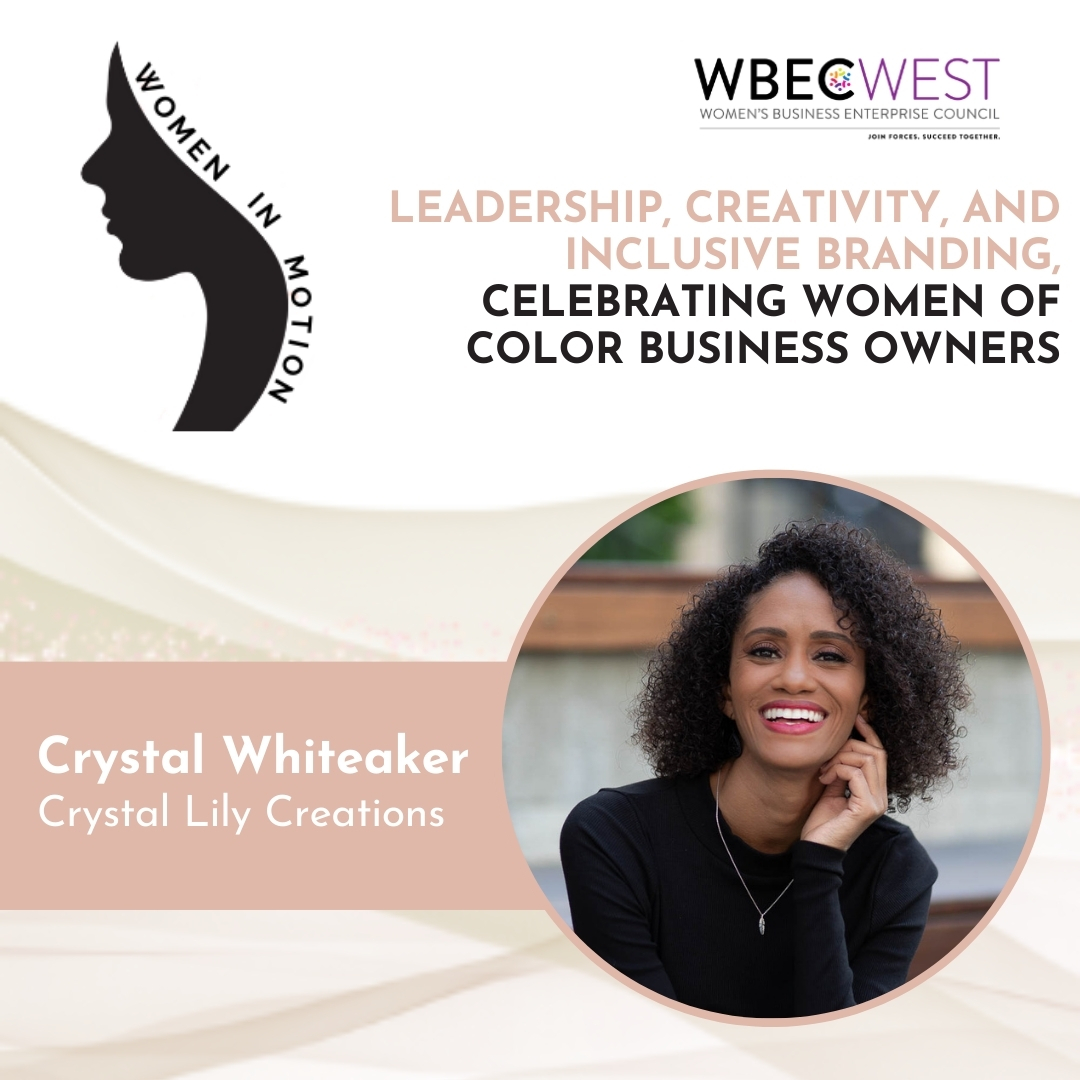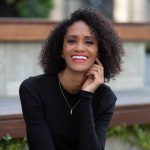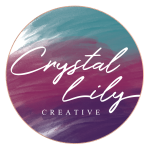
In this episode of Women in Motion, host Lee Kantor interviews Crystal Whiteaker, founder of Crystal Lily Creative. Crystal discusses her journey from a corporate background to becoming an inclusive branding and leadership development consultant and photographer. She explains how her business helps brands and organizations create inclusive environments through brand messaging, photography, coaching, and training.
Crystal shares insights into the challenges her clients face, the importance of core values, and her aligned values framework. She also introduces her book, “Brave Leadership is a Choice,” as a resource for inclusive leadership.
 Crystal Whiteaker (she/her) is the Founder and CEO of Crystal Lily Creative, and Author of Brave Leadership is a Choice: An Inclusive Guide to Creating Belonging.
Crystal Whiteaker (she/her) is the Founder and CEO of Crystal Lily Creative, and Author of Brave Leadership is a Choice: An Inclusive Guide to Creating Belonging.
Crystal is a photographer by trade and an Inclusive Branding and Leadership Development Consultant who helps mission driven brands and leaders create values-aligned human-focused environments.
Crystal brings 20 years of practical, creative, relational, process driven experience across multiple industries. She is a self-described “corporate trained, creative hippie” who puts a strong focus on core values to help people connect, communicate and lead with belonging in mind. 
Recognized as the 2024 Empowerment Leader of the Year by BRA Network, Crystal cares deeply about diversity, equity, inclusion, and belonging and is an advocate for leaders and organizations that provide resources and support for healing.
Beyond her work, Crystal enjoys spending time at the beach, connecting with people, and exploring new places.
Connect with Crystal on LinkedIn and follow Crystal Lily Creative on Instagram.
Music Provided by M PATH MUSIC
![]() This transcript is machine transcribed by Sonix
This transcript is machine transcribed by Sonix
TRANSCRIPT
Intro: Broadcasting live from the Business RadioX Studios, it’s time for Women in Motion. Brought to you by WBEC-West. Join forces. Succeed together. Now, here’s your host.
Lee Kantor: Lee Kantor here, another episode of Women In Motion and this is going to be a good one. But before we get started, it’s important to recognize our sponsor, WBEC-West. Without them, we couldn’t be sharing these important stories. Today on Women in Motion, we have Crystal Whiteaker with Crystal Lily Creative. Welcome.
Crystal Whiteaker: Thank you. Hello.
Lee Kantor: I am so excited to learn what you’re up to. Tell us about Crystal Lily Creative. How are you serving folks?
Crystal Whiteaker: So, I am an L.A.-based inclusive branding and leadership development consultant, photographer by trade, and what I do is help brands, leaders, and organizations create inclusive, values aligned, human-focused environments through their brand messaging, photography, coaching, consulting, and training.
Lee Kantor: And what’s your backstory? How’d you get involved in this line of work?
Crystal Whiteaker: So, I have a corporate background, as many entrepreneurs tend to do, and I originally started a photography business. I had spent about a decade in corporate and decided that I really wanted to pursue more of a creative passion and built a very inclusive photography business, and initially worked in the wedding and event space.
Crystal Whiteaker: And people started asking me questions about how I was able to cultivate such a diverse representative photo business and I started working with other business owners and leaders to help them cultivate inclusive businesses as well. And I started getting invited to speak and host workshops, and it kind of snowballed from there. And given my intersectional identity, it really felt like the most aligned work that I had ever done, so I bundled everything together to create my consulting business.
Lee Kantor: Now, when folks come to you, what is kind of the challenge they’re having where you’re kind of the right person to help them?
Crystal Whiteaker: The number one reason that people usually come to me is because they want to make sure that they are creating an inclusive business, or if they work for organizations, that they’re creating inclusive environments that are aligned with their core values and really create space for everyone to find that sense of belonging.
Crystal Whiteaker: And there’s two reasons that folks will come to me. One reason will be because they’re wanting to be proactive and making sure that they are doing that from the outset. And then, the other reason is usually because something has happened where someone has been harmed or offended in a way, and it is detrimental to the reputation of the leader of the organization and they are looking to course correct.
Lee Kantor: So, what are some examples of an inclusive environment?
Crystal Whiteaker: Examples of an inclusive environment are environments where people are seen, heard, and understood. Their humanity is honored. They are able to be whole in their humanity and their diverse lived experiences are recognized.
Crystal Whiteaker: And especially when we think about within workplaces and organizations also accounting for accessibility. So, what does accessibility for people with disabilities look like? Is your organization inclusive and accepting of the LGBTQ+ community? Is there a zero tolerance policy for things like bigotry and racism? So, really being mindful that most organizations are usually a melting pot, and making sure that everyone is able to bring their whole selves to work without worrying about how they’re going to be treated because of how they present.
Lee Kantor: So, if somebody comes up to you and says, “Crystal, we need some help in this area,” what does that first kind of meeting look like? What are some of the questions you’re asking them and what are some of the questions they’re asking you?
Crystal Whiteaker: Sure. So, the questions that I am asking them is, first and foremost, what is the reasons that you’re wanting to bring someone in to do this work together? What work has been done up to this point? You know, even if it’s as simple as reading books or reading articles, things of that nature. I will ask about the demographics of the organization. What does the leadership look like? What is the leadership team comprised of? I will also ask about values. What are the organization’s values?
Crystal Whiteaker: Because the way in which I work with people is helping to cultivate inclusive environments and experience through the lens of core values, because that tends to click with people a little easier, because it should be something that is intrinsic to the organization, not just an add-on, a box that has been checked of we have diverse hires, we have diverse leadership in place. But, really, how is inclusion showing up through the overall values of the organization? Meaning, is inclusivity embedded in your systems and your processes, not just the front facing checkbox items that people typically go to first.
Crystal Whiteaker: And people usually ask me what my approach is, what they can expect in terms of time commitment, and how they need to prepare themselves or their team if they have a team, and we go from there. It’s usually an initial conversation of about half-an-hour, and I’ll send them a proposal, they’ll get time to review it. And we usually have a follow up conversation to answer any clarifying questions and determine if it’s a good fit.
Lee Kantor: And what would a deliverable be?
Crystal Whiteaker: It varies. It depends on the organization. So, if I were to work on a longer term consulting project with a client, the deliverable could be as in-depth as reviewing and refining all of their messaging and their processes from things on their website, what’s happening on their social media accounts if they use social media, what messaging happens even down to their newsletter communications, internal processes, organizational structure. What processes are in place for your overall operations and management? And what is the process for my client’s clients from start to finish, what does that look like? And how can we make sure that’s being done with an inclusive lens? That’s for a larger scale full scope project.
Crystal Whiteaker: And because of the photography component that clients are able to add-on if they want to also take it a step further to ensure that their visuals are also inclusive, then they have the option to include custom brand photography.
Lee Kantor: Is there a story you can share maybe that illustrates how you came in and helped an organization? You don’t have to name the name of the organization, but maybe share the challenge that they were going through and how you were able to help them get to a new level.
Crystal Whiteaker: Sure. So, actually, I’m in the process of wrapping up a project right now with a client who they came to me in more dire circumstances. I want to make sure I’m not identifying the client, being respectful of them. They were in a situation where they had made some decisions that ultimately ended up being perceived as blatant disregard for people in the Black community and were perceived to be racist.
Crystal Whiteaker: And they needed support to really review their overall practices, their decision making, refining their values, and really doing a deeper examination of their leadership and how they were making decisions, and their overall awareness of harmful belief systems and policies really disrupting and identifying implicit biases so that they could ensure that who they were at the core, they were not a racist organization. They made some really poor decisions that reflected as such.
Crystal Whiteaker: So, really helping them to make sure that the decisions and the messaging that they are putting out moving forward is reflective of who they are at their core, and that they can take space to pause and really evaluate the decisions that they make before choosing to move forward with certain events or activities.
Lee Kantor: Now, why was it important for you and your organization to become part of WBEC-West?
Crystal Whiteaker: For me, I wanted to be a part of an organization where women business owners are uplifted and supported, and there are opportunities across a range of areas from support with funding to expanding business, and being able to connect and network with other like-minded folks. Because business ownership is hard enough, and being a very values-centric, more human-focused business owner, it breaks a little bit from the traditional norms of business. So, wanting to connect with people who may have those same like-minded ideals.
Lee Kantor: Now, you mentioned values, can you explain your Aligned Values Framework?
Crystal Whiteaker: Sure. So, this is a framework that I developed to support clients, and I use at least a component of it in all of the services that I offer. And this framework is really designed to take clients through six core steps.
Crystal Whiteaker: So, the first step is to help folks really clarify inclusion around language messaging and help them identify shared language in their own businesses if they want to make sure they are being mindful of through that inclusive lens. Then, really helping them to connect to who they are as leaders and how they expect others to connect in the environments that they are participating in, help them get rooted in their core values so that they can not only lead through their values, but also build relationships that are in alignment with their values, so that as their businesses and their brands grow, they’re in a space where they’re not expected to sacrifice their boundaries or anyone else’s, and really get them to a space where they can manage discomfort as they examine and identify any implicit biases. And we work on bias in three different levels, personal, professional, and community bias.
Crystal Whiteaker: And then, the last two steps are embody, so how can they embody a leadership style that is reflective of their core values. And then, the last piece is create, how can they create messaging and environments that are reflective of their core values through written, verbal, visual, and behavioral.
Lee Kantor: Now, is there an ideal client profile you have? Is there a niche that you serve?
Crystal Whiteaker: Not so much a niche, but what I do know is that the clients who work best with me and my framework and my approach are people who are detail-oriented. They often identify as highly empathetic and they sometimes identify as neurodivergent clients as well. And they want to make sure that they are cultivating spaces that are inclusive and trauma informed.
Crystal Whiteaker: So, a lot of the spaces that my clients work in are people who are creatives. They’re empathetic, curious creatives themselves. They work in mindfulness spaces. So, I’ve worked with a lot of therapists, florists – which is really interesting – and other coaches, specifically coaches who lead through a trauma informed holistic lens. And, also – I’m trying to think. There’s one other area – planners, people in the events space, and also people who work in other diversity, equity, inclusion spaces.
Lee Kantor: And what was the impetus to write your book, Brave Leadership is a Choice: An Inclusive Guide to Creating Belonging?
Crystal Whiteaker: People asked, and I also wanted to create an accessible, digestible way for people to be able to utilize and apply my frameworks and teachings for those folks who maybe couldn’t work with me directly.
Lee Kantor: So, is that a good place to start when they’re learning about you and your firm to go to the book and maybe buy the book and read that to understand a little more?
Crystal Whiteaker: Yeah. I would say that’s definitely a good place to start.
Lee Kantor: So, if somebody wanted to learn more and have a more substantive conversation with you or somebody on the team, what is the website? What is the best way to connect with you?
Crystal Whiteaker: You can visit the website, which is crystallily.co, and that’s C-R-Y-S-T-A-L-L-I-L-Y.C-O.
Lee Kantor: Well, Crystal, thank you so much for sharing your story today. You’re doing such important work and we appreciate you.
Crystal Whiteaker: Thank you for having me.
Lee Kantor: All right. This is Lee Kantor. We’ll see you all next time on Women In Motion.














